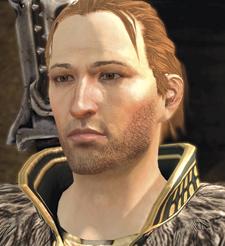You can’t please all the warriors all the time.
David Gaider, senior writer for Dragon Age II — a video role-playing game (RPG) from Canadian developer BioWare — is taking heat from disgruntled warriors, mages and rogues, both gay and straight. They are all infuriated by Anders, a mage of ambiguous sexuality who will flirt with anyone, has a kitten with healing powers named Ser Pounce-a-Lot and will offer you the key to his “underground passage” if you’re nice.
Leading Anders’s gay opponents is Oakland, a self-identified gay gamer who’s petitioned BioWare to terminate Gaider for creating “the worst stereotype homosexual character” he’s ever witnessed in a game.
Meanwhile, a not-so-gay gamer named Bastal has demanded a “no homosexuality” option to cock-block Anders, accusing Gaider and BioWare of neglecting their main demographic: straight male gamers.
Gaider eloquently defended himself on a BioWare forum, pointing out that Bastal’s concern was based on a faulty sense of privilege.
“You can write it off as ‘political correctness,’ but the truth is privilege lies with the majority. They’re so used to being catered to that they see the lack of catering as an imbalance.”
Rushing to Gaider’s side, gaygamer.net (a site for “boys who like boys who like joy sticks” and “girls who like girls who like rumble packs”) stated that they “do not share those views, refute them and firmly support Gaider.”
But Bastal appears to have some support. Three weeks after a clip of the gay romance was posted on YouTube, The Globe and Mail reported it had attracted 230,000 hits and hundreds of comments calling it “filthy” and “disgusting” and accusing BioWare of including the scene as part of a “deranged homo-propaganda campaign.”
Surely this isn’t the first time a queer character has shown up in a video game? A quick visit to Wikipedia reveals that queers started popping up as early as the mid-’80s in games like Moonmist, Space Quest IV and Ultima VI.
So why the current brouhaha? Because those seminal queer characters were just background — sissified, lecherous men, inhabiting the nefarious underworld of a medieval kingdom or a future dystopia. Or peripherally jilted lesbians bent on revenge (and available to satisfy the girl-on-girl action fantasy of the straight male gamer). They had little or no impact on the actual outcome of the game.
But with the advent of Dragon Age II, the new cyber queer has moved into the foreground, where he’s getting all up in your computer-generated face.
When you play Dragon Age II, you assume the role of an avatar named Hawke, a nationless medieval refugee who, over a period of a decade, rises in power and influence to become a legendary champion while battling five-legged Varterrals, cadaver-eating Harvesters, Ancient Rock Wraiths and several hordes of Darkspawn.
To succeed, you must surround yourself with as many companions as you can, each with their own special skills and weaponry. You may need Anders’s help, so you can’t just pretend you didn’t hear him ask, “Is there something in your tent that needs assassinating?”
If you rebuff him, he might pack up his longbow and go home. Then what’ll you do, without your mage and his healing kitten, when an army of Darkspawn shows up?
To the uninitiated, this might seem like a tempest in a technological teacup. But to the avid game player, there are stakes.
Remember how important it was when you played Monopoly with your siblings to be the first to choose a game piece because the Roadster was way cooler than the Thimble?
Well, now our game piece is the avatar Hawke, who we design from a seemingly infinite array of options, each presented on a virtual sliding scale. The skin-tone scale, for example, runs the gamut from Norwegian Steamed Milk to Somali Dark Roast. We can adjust our neck thickness from WWE wrestler to Karen Carpenter. And with each adjustment, we become more and more invested. This is the developer’s goal. It’s cyber-crack.
Then along comes a randy mage who threatens to ruin everything if you don’t put out, even if that means stretching your sexual orientation.
What we need is an avatarial Kinsey scale.
If you don’t want your manly avatar to be hit on by Anders, set your orientation at Clint Eastwood. Want Anders to challenge you to a private jousting match? Set it at Cazwell. Unsure? Click Kevin Spacey.
Your female avatar could operate exactly the same way, in reverse, with a scale running from Marilyn Monroe through Anna Paquin to Melissa Etheridge.
Wouldn’t that make everybody happy? It might even encourage some straight male gamers to experiment. They could start with the “I drank so much mead I don’t remember a thing” setting.

 Why you can trust Xtra
Why you can trust Xtra


